Materials:
Suit Coat
Piece of Chalk
Scissors
Pins and/or Safetypins
Needle & Thread or Fabric Glue
Step I: Finding a Coat
Finding a suit coat free or for cheap is quite easy. Before you go shopping for one, ask your parents, friends and family if they have any sitting around that you can have. Often, relatives will have a lot of them, so pick through what they have to find one you like. If you are not so lucky as to get a coat for free, look through thrift stores, ideally the Salvation Army or, failing that, Goodwill. If none are available in your neighborhood, check a local charity or religious center, tag sales, flea markets or consignment shops. Web sites such as Sportsmansguide.com can also provide inexpensive coats, as well as other items of interest, but they are generally not quite as cheap as thrift stores. Ideally, the average coat you buy should cost between $1 and $10, not more, unless you wish to buy something more expensive.
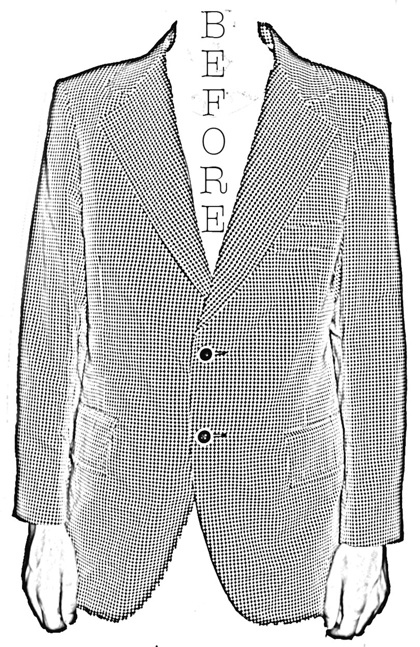
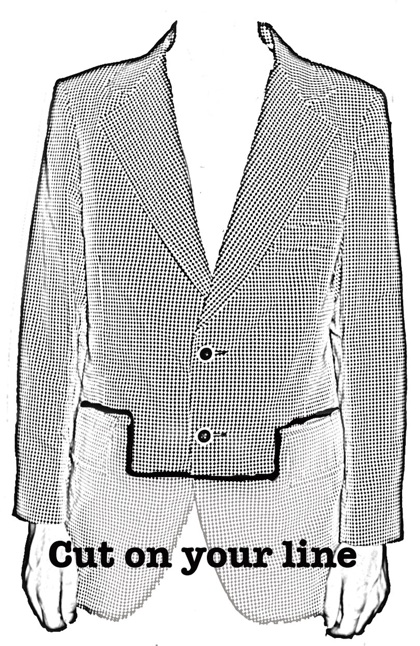
Step II: Choosing a Coat
Choosing a coat is also easy, and your primary concern is that your coat is comfortable and looks the way you like; although remember that you can always change or customize the color of the coat and buttons. Be sure that it fits well in the shoulders and that the top two buttons can close comfortable; we won’t be using any other buttons beneath the top two, so only worry about those. The coat should have an intact lining, as this will make things easier for you during the conversion process, although this is not required.
If you want to dye or bleach the coat, make sure you do this before you begin cutting. You can even give the coat a distressed look by only bleaching sections of it, but again this should be done before cutting begins. Be careful to test out any dyes or bleaching agents on a small section of the coat before you do the entire thing, as different chemicals and fabrics will react in different and often unpredictable ways toward one another.
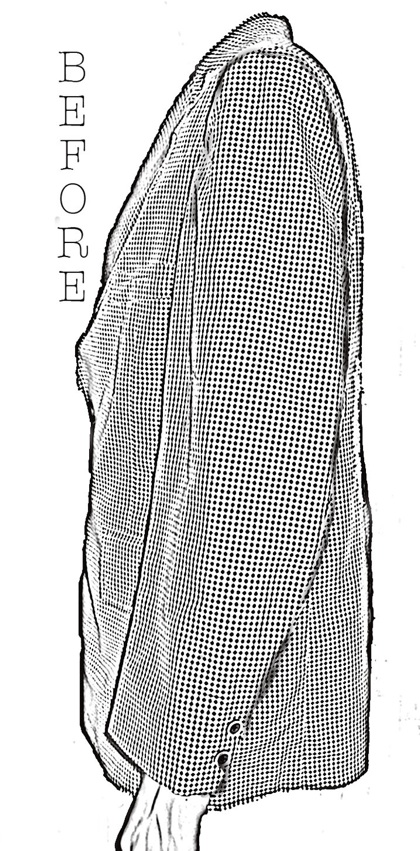
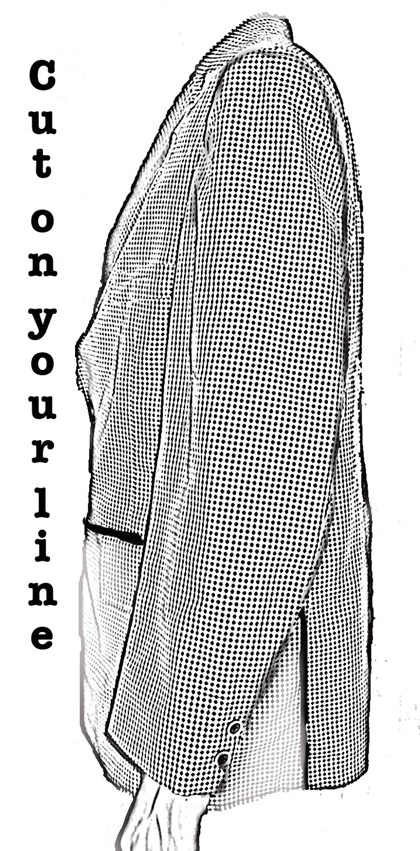
Step III: Measuring the Coat
For measurement, you will want to be wearing the coat with the buttons closed, as the alterations will depend on how it sits on you. Use a piece of chalk for marking, and draw a line across the coat at around bellybutton level. The line should span from arm to arm, or about the edges of your hips. Next, draw another line straight down on either side. These will be your cutting lines. If you make a crooked line or need to remeasure, chalk lines can be brushed off and redrawn.
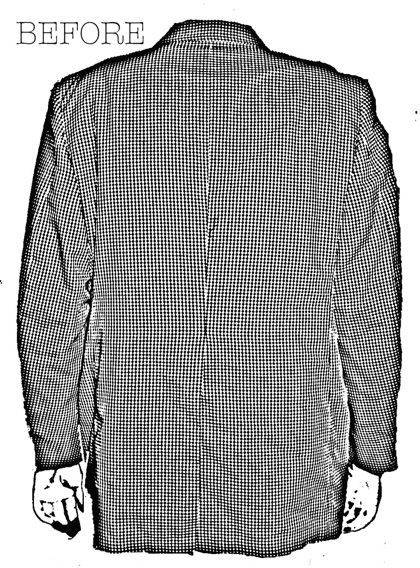
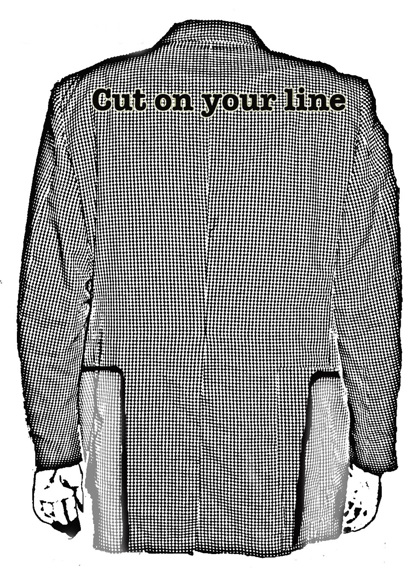
Step IV: Cutting
Before you cut, you will need to loosen the lining for when you start cutting. Using a seam ripper or sharp knife, break the seams below the cutting lines. Don’t worry if you go too high in your seam-ripping, but try not to break any seams above your cutting line if possible.
Now you can begin cutting. Carefully cut along your chalk lines, creating the picture in the image. If you want to be certain that the two sides of your coat will be symmetrical, simply cut out one side as normal, then fold the coat over and use the cut side to guide your chalk in marking the second side. Be sure not to cut the lining at all; that will be dealt with later.
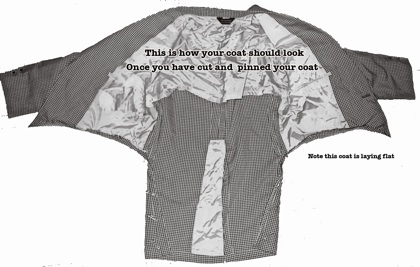
Step V: Lining
Now that you are finished cutting, take the uncut lining and tuck it up inside the coat. If it is too long to tuck up easily, you may trim it down a bit. The point of the doubled-up lining is to help anchor the new seam later on.
Using pins to secure the fabric in place, sew a new seam at the edge of the lining and the coat. If you would prefer not to do any sewing, fabric glue can be used to secure the hem instead, and makes an effective sealant. If you use this second technique, make certain that the glue does not set on any materials you do not want to be glued to the coat. Be aware that a glued hem will not hold as well as a stitched one. Also, for a more distressed look, feel free to substitute safety pins for sewing, although be aware that this will be comparable to gluing in terms of stability.
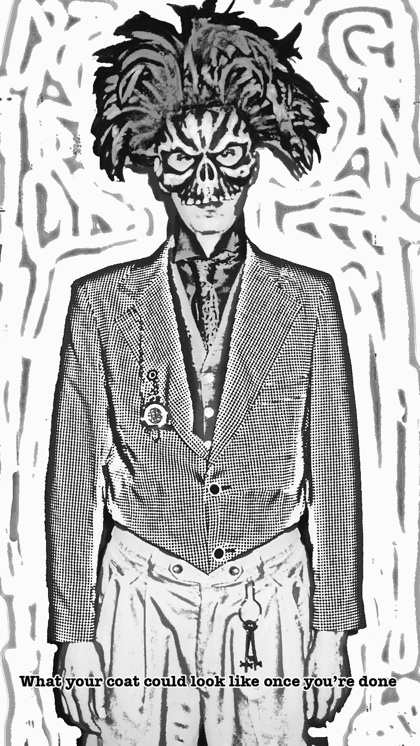
Step VI: Finishing
Now that your lining is set, you have the choice of giving the coat a distressed look, or giving it a more formal, polished look. To distress the coat, simply leave the cut edges of the coat unhemmed and let them fray with wear. For a more polished look, fold over as small a hem as possible and either sew or glue it in place as you did with the lining. During this process, please feel free to try on the coat to be certain it looks the way you want. To make wider or narrower tails, feel free to cut back or fold over the coat tails until you have the width and angle you like. Only sew or glue the hem after you have made sure that you like how everything looks.
With that, you are finished. Please enjoy your new tail coat, and customize it as you see fit.
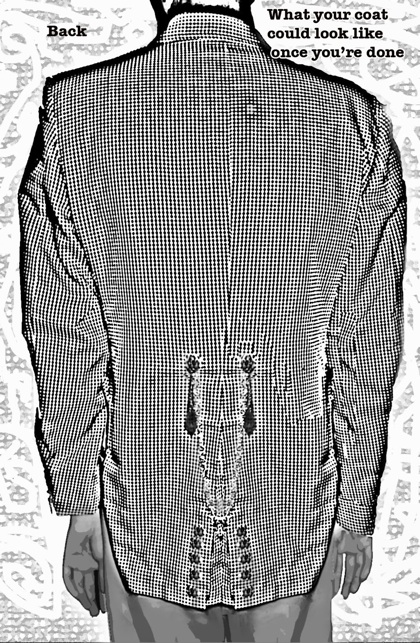
Evelyn has been known to fix anything in five minutes using only safety pins and duct tape, and has the talent to make it look ten thousand times better than it did before. If you wish to read her random musings please look to her twitter, twitter.com/jaborwhalky.










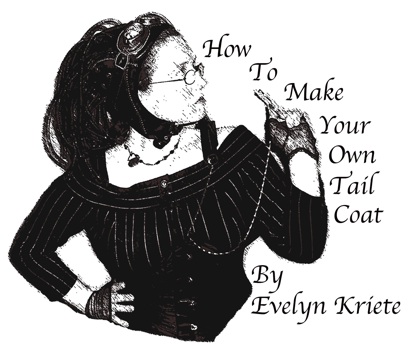
Wow, yes, and thanks!
How fabulous is this? Thank you!!
Love seeing an actual tutorial on this. Thank you! :)
This was awesome! I went home last night and it worked perfectly. It is making my steampunk look work for halloween and any future opportunities. I am so excited! I will post some halloween pics on my blog this weekend, including my newly converted tail coat! http://dyockman.wordpress.com
ANITA TWITCHELL?!
HEY!
I get double-breasted jackets at the thrift store all the time; I’m gonna have to see if my costumer can do one of these for me for formal occasions.
ps. hey neeters, lol
I have used this idea to convert a suit jacket for my 2 year old as I am making a Lord Tumble outfit. Excellent!
My hubby is going to be the Mad Hatter for Halloween. I bought an inexpensive black and white Herringbone print suit for $10.00. that I was going to add tails. I checked the net and found you, so, I cut as suggested above and it is just perfect. His costume is looking good thanks to your tips. Instead of adding I cut away which is so much easier. Bring on the party.
Thanks ! Very good directions, I’m going to try this
http://youwhoineverknew.wordpress.com
My son is Mr. Scrooge in the school’s Christmas performance this year. Been stressing out about where to find a coat with tails. Thanks for this!
Uh, my suit jacket is a shirt one with no buttons, what do I do lol
Holy crap. I had been looking for a way to make a waist coat/prince Charlie from a suit coat, for formal kilt wear. Worked like a charm. Thanks.
Hopefully you still work..I’m after this suit..
Thank you very much for this conversion. I made my own tailcoat using your instructions. I think my material choice was probably to light as the tails are too floaty. Apart from that I am extremely happy with my practise outcome. I will be more selective choose another to jacket to convert.